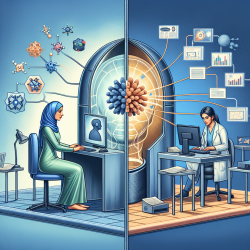Understanding PET/MRI Technology
Positron Emission Tomography (PET) combined with Magnetic Resonance Imaging (MRI) represents a significant advancement in diagnostic imaging. This hybrid technology allows for detailed metabolic and phenotypic imaging of tissues, which is particularly useful in oncology. PET/MRI provides the advantage of combining the functional imaging capabilities of PET with the anatomical detail of MRI, offering a comprehensive view of the target tissues.Key Findings from the Research
The research provides several recommendations and guidelines for using PET/MRI in oncology. Here are some key points:- Technical Acquisition: The study emphasizes the importance of a standardized imaging protocol to ensure repeatability and reproducibility.
- Quality Control: Regular quality control measures are essential to maintain the accuracy and precision of PET/MRI results.
- Personnel Training: Adequately trained personnel are crucial for the successful operation of PET/MRI systems. This includes technologists, physicians, and physicists specialized in both PET and MRI.
- Attenuation Correction: Advanced methods for attenuation correction are necessary to ensure accurate PET quantification.
Implementing Research Outcomes in Your Practice
As an online therapy practitioner, you can leverage the findings from this research to improve your diagnostic capabilities and treatment planning. Here’s how:- Stay Updated: Keep abreast of the latest advancements in PET/MRI technology and integrate them into your practice.
- Invest in Training: Ensure that your team receives ongoing training to stay proficient in both PET and MRI technologies.
- Adopt Standard Protocols: Implement standardized imaging protocols to enhance the accuracy and reliability of your diagnostic services.
- Focus on Quality Control: Regularly perform quality control checks to maintain the integrity of your imaging results.
Encouraging Further Research
While the current research provides a solid foundation, there is always room for further exploration. Encourage your team to engage in continuous learning and research to stay ahead in the field. Participating in clinical trials and collaborating with research institutions can also provide valuable insights and enhance your practice.To read the original research paper, please follow this link: International EANM-SNMMI-ISMRM consensus recommendation for PET/MRI in oncology.










